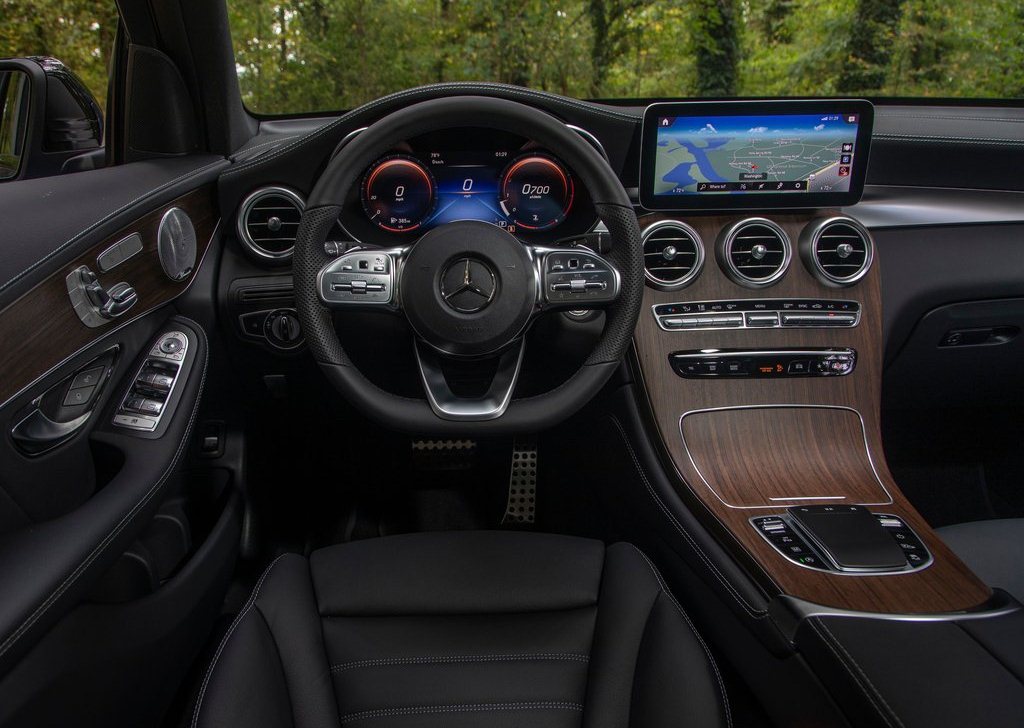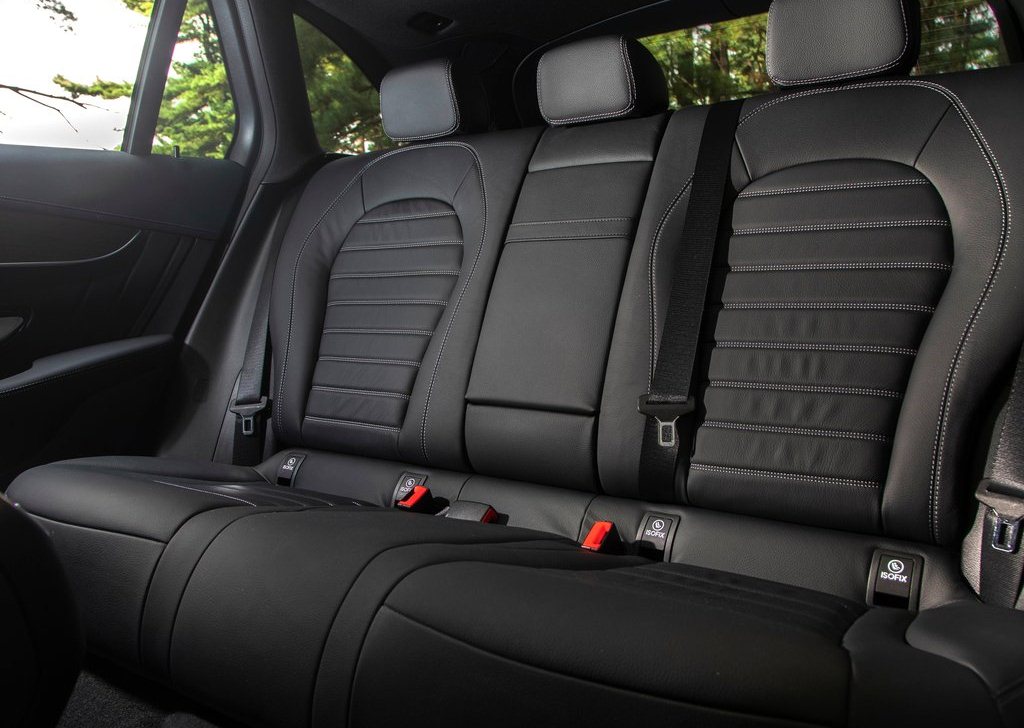Freedom in its most beautiful form - that is what the Mercedes-Benz GLC has stood for since its launch in autumn 2015. Like its predecessors, the SUV combines outstanding on- and off-road driving characteristics with spaciousness, practicality and comfort. In addition, the latest generation adds further advanced pioneering technologies, distinctive design, connectivity and state-of-the-art infotainment. Thus, the GLC once more demonstrates how elegantly and effortlessly hallmark brand safety and intelligent adaptability can be combined to great success. The result is an SUV that sets new standards, on the road as well as in terrain.
With its distinctive appearance, innovative driving assistance systems and a new range of engines, the GLC offers the best from Mercedes-Benz. The exterior design offers a wide and sporty visual appearance. Muscularly sculpted surfaces and distinctive details such as the chrome elements, which now run from the front to the rear end as standard, the redesigned headlamps and the heavily contoured radiator grille ensure a strong off-road character. The interior combines luxury and user-friendliness in an uncompromising way: The workmanship is at a high level and the infotainment system has larger touchscreen multimedia displays.
In addition, the latest generation of the MBUX - Mercedes-Benz User Experience multimedia system offers intuitive and versatile operating options such as touch, gesture control and the optimised voice control system. The driving assistance systems were considerably expanded and complemented with the exit warning function, the emergency corridor function and the tail end of a traffic jam function, among others. Also new is Trailer Manoeuvring Assist, which provides assistance with manoeuvring in reverse in particular. For the market launch in mid-2019, the Mercedes-Benz GLC will be equipped with new petrol and diesel engines of the latest engine family from Mercedes-Benz with more output and greater efficiency - more engines will follow later in the year.
The new range of engines: powerful efficiency
The Mercedes-Benz GLC will be equipped with the next generation of four-cylinder petrol and diesel engines. The crucial feature of the M 264 two-litre four-cylinder engine from Mercedes-Benz is the increased output at significantly lower fuel consumption. In the GLC 300, the M 264 four-cylinder engine replaces the M 274 predecessor engine, the OM 654 four-cylinder diesel engine replaces the OM 651 predecessor engine.
The new engine generation is of great importance for reducing CO2 emissions and is a systematic advancement with regard to lowering consumption. The main technology components are CAMTRONIC variable valve control, which heats up the exhaust system without driving up consumption, the twin scroll turbocharger and the additional 48-volt system with belt-driven starter-generator. The combination of the 48-volt on-board power supply and belt-driven starter-generator increases the agility, improves the comfort characteristics - and significantly lowers the fuel consumption. This is made possible by the system permitting important hybrid functions such as "energy recovery", "boost" and "sailing mode" without high-voltage components - to be more specific, boosting, recovering up to 10 kW of energy (in the rev range up to 2500 rpm) and operating in sailing mode with the engine switched off. Stricter requirements and lower limit values - the four-cylinder OM 654 diesel engine is designed with an eye on further decreasing consumption and emissions as well as lowering operating costs and improving engine output.
The most important components of the exhaust gas aftertreatment system are directly mounted on the engine for efficiently reducing emissions. In addition, measures for heat insulation and further developed coatings such as SCR technology (Selective Catalytic Reduction) cause an additional decrease in emissions. To reduce the nitrogen oxide emissions further under higher loads, the OM 654 is equipped with an additional underfloor SCR catalyst. As a result, the engine today already complies with the RDE (Real Drive Emissions) requirements. The OM 654 four-cylinder diesel engine is combined with 4MATIC all-wheel drive and the 9G-TRONIC automatic transmission, which supports both a dynamic and a fuel-saving driving style.
MBUX: intuitive operation
Well thought-out, ergonomic, comfortable - these guidelines governed the advancement of the operating and display concepts used in the Mercedes-Benz GLC. The focus is on the interaction with the vehicle and its functions through gestures, touch or the voice control system. This is made possible by the latest telematics generation of the Mercedes-Benz User Experience, which is characterised by intuitive logic and a wide range of operating options. Overall, the interplay of the touchscreen displays, the navigation with augmented reality, the intelligent voice control and the user interface sets real standards.
The information the driver needs is shown on two high-resolution displays. Optionally, the instrument cluster measures 12.3 inches. The free-standing multimedia display in the centre is available in 10.25 inches with 1920 x 720 pixels. The driver can choose from three individual representations to suit the mood or the interior: "Classic" is an advancement of a classic display, "Sport" presents a high-contrast high-tech look, "Progressive" visualises modernity in reduced form. The graphics in brilliant quality underscore the comprehensibility of the intuitive operating structure. New additions are the touch sensitivity of the multimedia display - and the Touch Control buttons on the multifunction steering wheel for operating the instrument cluster and the multimedia system.
Another effortless way of operating the multimedia system is the Interior Assistant. A camera in the overhead control panel captures the movements of the hand as it approaches the touchscreen or the touchpad on the centre console. The system makes a distinction between the gestures of the driver and the front passenger, which changes the image on the media display accordingly by highlighting or enlarging individual elements. The reading spot also can be switched on and off by hand control. To this end, the light in the overhead control panel follows the movement when the driver is looking for something on the front-passenger seat, for example. In addition, there is the option of operating a favourite function of the multimedia system by a specific gesture that was stored previously.
Driving assistance systems: safe support
In Germany, 85 percent of customers cite "safe" as the top characteristic when it comes to the GLC - and besides the typical SUV traits, this is due to the intelligent driving assistance systems. The scope and level in the new model have been increased further still and the driver support with regard to safety and comfort thereby further enhanced. When Active Distance Assist DISTRONIC with route-based speed adaptation is activated, the new Mercedes-Benz GLC is able to recognise and respond to traffic jams or slow-moving traffic with the help of information from LiveTraffic before the driver becomes aware of this traffic obstruction. When a traffic jam is detected (and if the driver does not choose a different response), DISTRONIC reduces the speed to around 62.5 mpg (100 km/h) as a precaution. This is complemented by an improved Active Lane Keeping Assist as well as by additional functions of Active Emergency Stop Assist.
Active Braking Assist (standard in the UK) with tail end of traffic jam emergency braking function, turn-off and cross-traffic function reduces the risk of a potential accident when making a turn, for example, if the driver fails to see oncoming vehicles. If there is a danger of a collision with oncoming traffic when making a turn across the road, the GLC can be braked at the speeds typical of such manoeuvres. Braking intervention takes place if the driver signals the intention to make a turn and the vehicle can be braked to a stop before crossing the lane markings. Oncoming vehicles are detected by the long-range radar sensor in the front and the stereo multi-purpose camera.
Active Steer Assist even helps the driver with forming an emergency corridor on multi-lane roads. As per statutory requirements, for orientation the vehicle uses the edge of the lane depending on the lane and on motorways below 37.5 mph the surroundings as well as detected lane markings. Also possible is the simplified overtaking manoeuvre with activated Active Distance Assist DISTRONIC: When the driver activates the turn indicator at speeds between 50 mph and 112 mph on multi-lane roads, Active Lane Change Assist can help with changing lanes.



















0 Comments